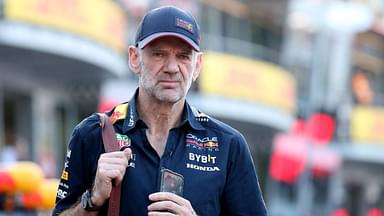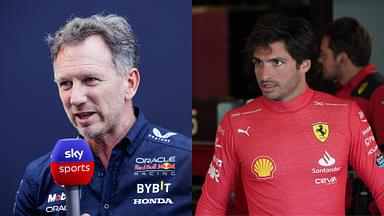Ferrari team principal Fred Vasseur has raised concerns regarding F1’s regulations after Carlos Sainz’s Chinese GP qualifying incident. The stewards permitted Sainz to continue in the session because they deemed that his car had not “stopped” on track. After the Spaniard made an error during Q2 and lost control of his SF-24, his car came to a halt momentarily. Since drivers are not permitted to carry on during qualifying if the stewards deem that a car has “stopped” on track, a controversy emerged about how the officials perceived the incident.
On the one hand, Aston Martin believed that the stewards should not have let Sainz carry on. Meanwhile, on the other hand, Ferrari argued that Sainz’s SF-24 never came to a complete halt.
Ultimately, the stewards permitted Sainz to carry on. Although the decision went in Ferrari’s favor, Vasseur believes he is yet unsure if the regulations are clear.
When asked about the same, Vasseur said (as quoted by Junaid on Twitter (now X)), “I don’t know if it’s clear, but for sure we need to have some understanding what happened yesterday. We asked the director if we can restart. He said yes, and it was the end of the story”.
Vasseur then added how over time the regulations have become more and more complicated. The Frenchman believes that when he started in F1, the number of pages of the regulations was only 20. However, they have increased to over 75 today.
Moreover, Vasseur believes that since teams have now hired more lawyers, F1 cannot afford to have any loopholes in the regulations. He believes that they need to clearly define the regulations to avoid any confusion. With the stewards having permitted Sainz to continue, Aston Martin decided to appeal their decision.
Aston Martin wanted stewards to disqualify Carlos Sainz’s Q2 lap time
Since stewards permitted Carlos Sainz to carry on in Q2, the Spaniard registered a good enough lap time to move to the third and final part of qualifying. With Sainz moving ahead, it meant that Aston Martin’s Lance Stroll was knocked out after registering only the 11th fastest time.
Consequently, Aston Martin decided to appeal the stewards’ decision post-qualifying, with the hope that they would then disqualify Sainz’s Q2 time. Had the stewards disqualified Sainz’s Q2 time, then Stroll would have moved into the top 10 instead of the Spaniard.
Soon after Aston Martin launched an appeal, the FIA released a detailed statement to explain why they permitted #55 driver to carry on. Their reply read (as quoted by racingnews365.com),
“It is clear that the plain language of Art. 39.6 suggests that so long as a car “stops” on the track during a qualifying session, that car should not be permitted to take further part in the session.
However, it was clear from the examples cited by a number of the team managers present and the FIA, that this was not how this rule was applied by the teams and the FIA in the past. In the FIA’s view, what was crucial was that the car would not receive any outside assistance in order to restart (e.g. from marshals)“.
Because of the nature of the FIA’s reply, there is a possibility that their response would add to the confusion among not only F1 fans but also the teams themselves. This is perhaps the reason why Fred Vasseur has urged the FIA to clarify their sporting regulations.







